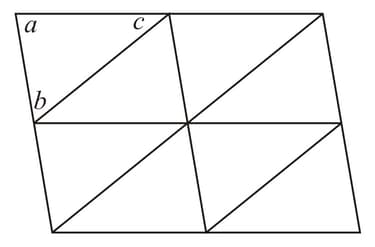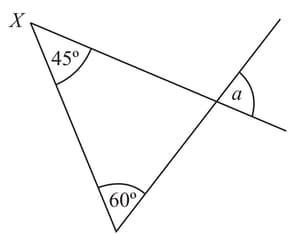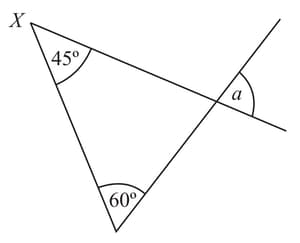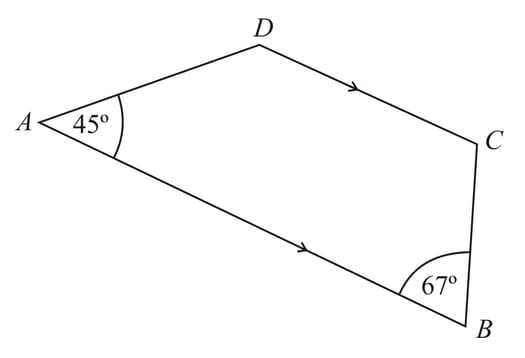Lynn Byrd, Greg Byrd and, Chris Pearce Solutions for Chapter: Angles and Constructions, Exercise 3: Exercise 5.2
Lynn Byrd Mathematics Solutions for Exercise - Lynn Byrd, Greg Byrd and, Chris Pearce Solutions for Chapter: Angles and Constructions, Exercise 3: Exercise 5.2
Attempt the practice questions on Chapter 5: Angles and Constructions, Exercise 3: Exercise 5.2 with hints and solutions to strengthen your understanding. Cambridge Lower Secondary Mathematics Learner's Book 7 Second Edition Digital Access solutions are prepared by Experienced Embibe Experts.
Questions from Lynn Byrd, Greg Byrd and, Chris Pearce Solutions for Chapter: Angles and Constructions, Exercise 3: Exercise 5.2 with Hints & Solutions
Look at the diagram. Explain why these two lines cannot be parallel.

This shape is made from eight identical triangles. Sketch the diagram and label the other angles equal to or .

This shape is made from eight identical triangles. Use this fact to calculate the missing angles.

The diagram shows angle is . Calculate .

The diagram shows angle is . Angle is increased to . Find the new value of .

The diagram shows angle is . Angle is increased to . Find the new value of .

The diagram shows angle is . Can angle be more than ? Give a reason for your answer.

This trapezium has a pair of parallel sides. Use this fact to calculate the missing angles.

